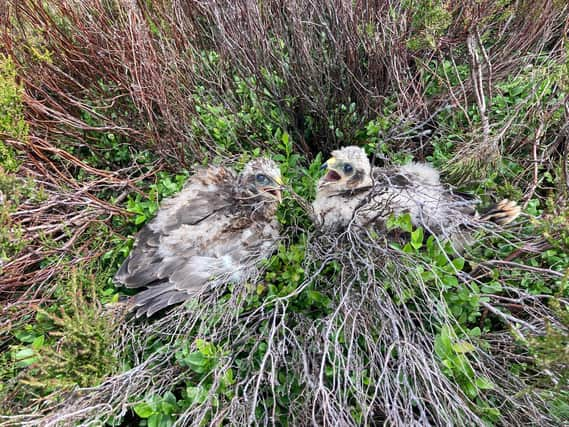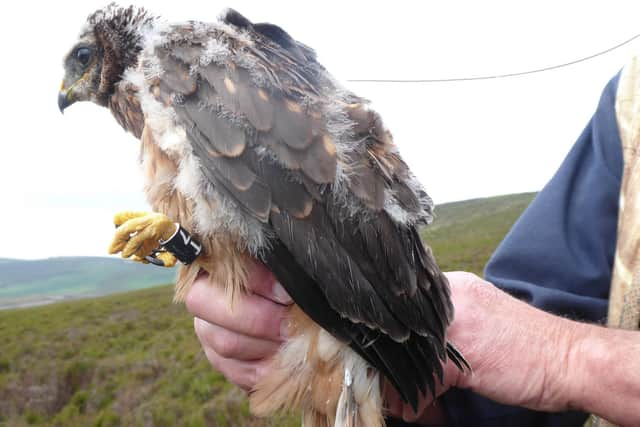Rare hen harrier nest discovered in High Peak as National Trust's long term 'Vision' for wildlife restoration bears fruit


The discovery has been celebrated by owners, the National Trust, which in 2013 set out its long-term High Peaks Moor Vision, with wildlife and bird of prey restoration at its heart.
The trust’s Peak District manager, Jon Stewart, said they were “delighted” to learn about the nest.
Advertisement
Hide AdAdvertisement
Hide Ad“The hen harrier has been one of the most persecuted birds of prey in Britain for many years and we have set out on a mission to work with others to create the conditions for the harrier and other birds of prey to thrive once again in the uplands,” he said.


Since it published the High Peak Moors Vision, Mr Stewart said there has been success with hen harriers breeding in 2014, 2018, 2019 and now 2021.
Along with another successful breeding in 2006 on National Trust land, these were the only breeding successes documented in the Peak District.
“Healthy bird of prey populations are at the heart of the Vision we have for our land in the High Peak and in recent years the results are encouraging overall,” Mr Stewart said.
Advertisement
Hide AdAdvertisement
Hide Ad“We hope this will be a beacon of light for improving the fate of our birds of prey and providing the healthy natural environment that so many people care about and want to see.”
Hen harriers are one of our most intensely persecuted birds of prey and has been placed on the UK Red List for conservation. They are known for the ‘sky dance’ male hen harriers perform to attract a mate.
Following the discovery of the nest, Mr Stewart said the trust was working closely with the RSPB and the Peak District Raptor Monitoring Group who will help with monitoring and satellite tagging of the young chicks.
Over the coming months the National Trust and RSPB plan to share the progress and journey of one of the birds, named Maia, which has been satellite tagged.
Advertisement
Hide AdAdvertisement
Hide AdBut Howard Jones, from the RSPB, said while they were delighted Maia and her siblings had successfully fledged the nest, their future was far from
secure.
“It is always with a mixture of joy and trepidation that we watch young hen harriers like these venture out into the wider world, as the threat of them being illegally killed once they leave the nest sadly remains.
“Satellite tagging continues to prove persecution to be the number one factor suppressing the hen harrier population in England.”
Mr Stewart agreed.
“Given the trials that face them now that they have fledged from their nesting site, we need to think of ultimate success being when these young and many more like them come back to the Peak District as adults to successfully raise young themselves.”
Advertisement
Hide AdAdvertisement
Hide AdMuch of the High Peak moorland is leased for grouse shooting and Mr Stewart said all shooting tenants had signed up to “actively support” the High Peak Moors Vision.
“The National Trust has worked with its partners including the Peak District Raptor Monitoring Group and our tenants to give the birds the best chance of success,” he said.
“There is a great sense that we all want this to work not just for these birds now, but as a symbol for the whole future direction of our uplands.”